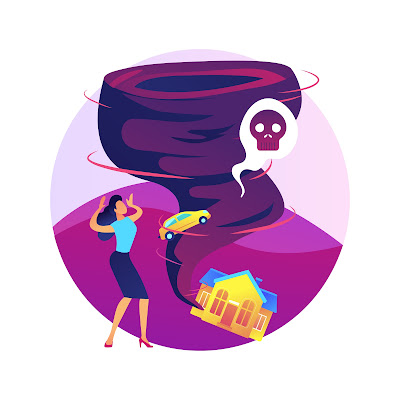Hurricane Ian
 |
| {getButton} $text={Image from Vox} $icon={link} $color={#4353ff} |
As the global climate warms, more storms are experiencing this type of rapid intensification, rapidly growing from relatively weak tropical storms to category 3 or higher hurricanes within 24 hours, prompting meteorologists to It's baffling and gives residents little time to adjust and prepare for it.
Here are some key facts about how climate change will rapidly intensify tropical storms.
Warmer seas are causing Stronger Winds
More than 90% of his excess heat from human-induced global warming in the last 50 years has been absorbed by the oceans. Oceanic and Atmospheric Administration data show that sea surface temperature has increased an average of 0.14 degrees Fahrenheit every decade since 1901.
This is very important as storms are getting stronger over the ocean. And the warmer the water, the more energy it absorbs. Higher surface temperatures allow hurricanes to reach higher levels of maximum sustained winds. This is a common indicator used to express storm intensity.
Susana J. Camargo, hurricane expert and professor at Columbia University's Lamont-Doherty Earth Observatory, said:
A 2020 analysis of satellite imagery shows that the likelihood of a hurricane developing into a Category 3 or higher storm with sustained winds exceeding 110 miles per hour has increased by about 8% in his decade since 1979.
 |
| {getButton} $text={Image from Freepik} $icon={link} $color={#4353ff} |
These winds intensify Faster
Warmer oceans not only make storms stronger, they also make them stronger faster, says Kelly A. Emanuel, a meteorologist and hurricane expert at the Massachusetts Institute of Technology. Rapid intensification technically means an increase in maximum sustained winds of at least 30 knots (35 mph) over a 24-hour period, according to the National Hurricane Center. Researchers found that the likelihood of a hurricane intensifying rapidly increased from 1% to 5% since the 1980s.
Some of the deadliest Atlantic storms of the last decade are rapidly intensifying. Harvey in 2017 was a Category 1 hurricane on the night of August 24th. When the storm reached Texas the next day, it was a Category 4 hurricane with winds of 130 mph. Later in that hurricane season, Maria strengthened from a Category 1 hurricane to a Category 5 hurricane in just 15 hours.
In 2021, Hurricane Ida strengthened from an 85 mph Category 1 hurricane to a Category 5 hurricane with 150 mph winds in less than 24 hours.
Dr. Emmanuel said on Monday morning that the current situation is "ideal" for Ian to follow a similar path of development.
More than just Warm Seas
Several factors other than ocean temperature affect hurricanes, but scientists are less certain about other climate effects.
His one of these elements is vertical wind shear. This is a measure of how much wind speed and direction change with altitude in the atmosphere. Strong vertical wind shear hinders hurricane development by tilting the hurricane structure and pushing cold, dry air into the core. "It's like pouring cold water on a fire," said Dr. Emmanuel.
In a 2019 study published in Nature Scientific Reports, researchers found that rising temperatures could weaken vertical wind shear, allowing hurricanes approaching the east coast of the United States to intensify more quickly.
However, the results of the study were localized. Globally, the impact of warming on wind shear is variable, said Dr. Camargo, one of the study's authors.
Short notice raises the Stakes
A surge in hurricane numbers and unexpectedly rapid intensification is a thorny problem for forecasters, and their predictions can affect the preparedness of communities.
The timeframes for making decisions are getting shorter, says Dr. Emanuel. For example, if officials working with forecasters issue evacuation orders too early, they risk dispatching hundreds of thousands, and sometimes millions, of people unnecessarily, creating chaos and shutting down highways. It could be blocked and disrupt the transport system. In some cases, this can be more dangerous, destructive, and costly than leaving it alone.
"Then you cried wolf," said Dr. Emmanuel. People may not listen the next time an evacuation warning is issued.
However, any delay in communication leaves people with no time to escape the effects of a dangerously powerful hurricane.
"This is a forecaster's worst nightmare, Emmanuel, when a relatively weak hurricane becomes a Category 4 or Category 5 hurricane overnight.
